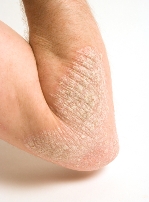

The most effective way to treat dandruff in children is with dandruff shampoo products formulated especially for kids and which contain the ingredient pyrithione zinc. When this happens to children, it’s important to treat dandruff right away to prevent further irritation and discomfort. However, in some cases, it can cause the scalp to be red, inflamed, and painful. In most cases, dandruff is simply irritating and embarrassing. If you see any of these symptoms beyond itching and flaking, it is vital that you see a doctor and be tested for a scalp fungal infection. Severe fungal infections on the scalp can cause swollen glands.Fungal infections on the scalp, if untreated, can lead to large swellings or bumps that can be painful and, if left untreated, can cause permanent scarring and hair loss.Scalp fungus can cause the hair to fall out in patches, as it weakens hair fibers and causes itching which makes those suffering from the infection scratch and cause further hair loss.However, there are ways to differentiate between a scalp fungus and dandruff. Though dandruff is not a fungus, there are several fungus varieties that can infect the scalp and cause dandruff-like symptoms.
Yeast overgrowth on scalp skin#
Dandruff can also be caused by a skin condition called seborrheic dermatitis that causes oily, red, and scaly skin that can flake off to create dandruff. However, unwashed hair can boost Malassezia growth, which can, in turn, lead to dandruff. It is important to note that dandruff is not directly caused by bad hygiene. The scalp must be sensitive to the Malassezia-made oleic acids in order for dandruff to form. The simple presence of Malassezia does not indicate dandruff, as this microbe occurs naturally on healthy scalps. These excess skin cells clump together and flake off as dandruff. This irritation causes the scalp to increase the rate at which it renews its skin cells, as the scalp is trying to rid itself of whatever is causing the irritation. These fatty acids, most often referred to as oleic acids, are varieties of carboxylic acid and can lead to irritation in about half of the population. As Malassezia feeds on the sebum, it generates omega-9 fatty acids.

Malassezia is found on almost every scalp, as it feeds on the naturally produced scalp oil called sebum. One of the most common causes of dandruff is a yeast-like fungus called Malassezia globosa.

However, it can form as a result of a fungus on the scalp.


 0 kommentar(er)
0 kommentar(er)
